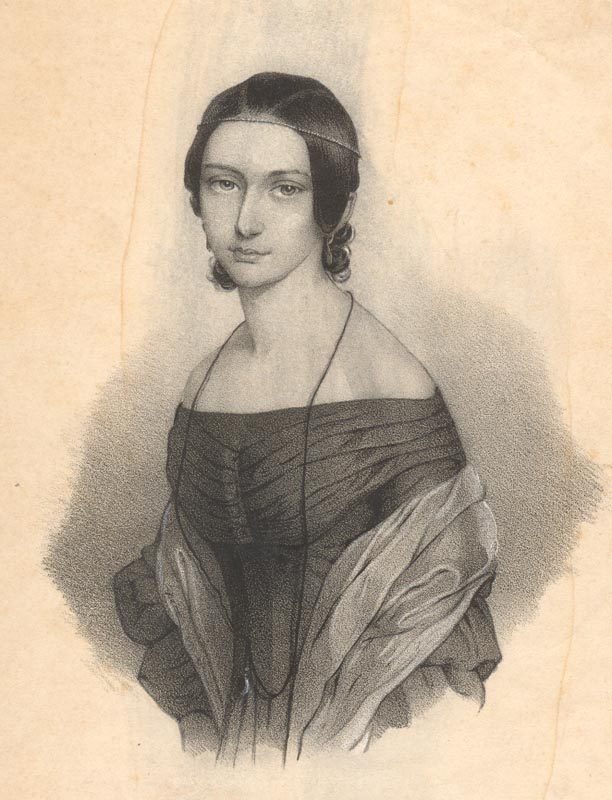Clara Schumann
Engraved portrait by Em. Raerentzen & Co., 1842
Portrait File
Gilmore Music Library
 Although it is Robert Schumann’s bicentenary that we celebrate in 2010, an exhibit devoted to him must inevitably take notice of his equally remarkable wife, Clara Wieck Schumann (1819–1896). This is especially true at the Gilmore Music Library, which is fortunate to hold a manuscript and several letters in her own hand.
Although it is Robert Schumann’s bicentenary that we celebrate in 2010, an exhibit devoted to him must inevitably take notice of his equally remarkable wife, Clara Wieck Schumann (1819–1896). This is especially true at the Gilmore Music Library, which is fortunate to hold a manuscript and several letters in her own hand.
Clara Wieck came from an extraordinarily musical family; her father, mother, grandfather, stepfather, half-brother, and half-sister were all musicians, some of them of considerable distinction. Her parents divorced when she was five, and custody went to her father, Friedrich Wieck (1785–1873), a piano teacher. Clara’s exceptional talents became apparent early on, and Friedrich set out to make her into a world-class piano virtuoso, even though women rarely had the opportunity to pursue careers as instrumentalists in that era. (With few exceptions, the most prominent female musicians of the day were singers.) Friedrich was a proud father, a skilled pedagogue, and a tyrannical taskmaster, so Clara’s training was intense in every way. Although her childhood was not easy, she thrived on the challenge; she became a superb pianist at an early age, performing widely and developing an international reputation before she had reached her teens.
When Robert Schumann (who was nine years her senior) moved into the Wieck house to take lessons from Friedrich, Clara was just a child, but the two young musicians soon became close, and as they grew older, their friendship turned to love. Friedrich did not approve, and he did everything he could to thwart their desire to marry—he prevented them from meeting for long periods, tried to intercept their correspondence, filed lawsuits, impugned Schumann’s reputation and eventually Clara’s as well, and refused to share the money she had earned with her concert performances. Ultimately his efforts failed, and they finally married in 1840.
Marriage was a source of great happiness for both Clara and Robert, but he had mixed feelings about her ongoing career as a traveling virtuoso. He revered her achievements and collaborated with her constantly, but he was not always comfortable with the untraditional nature of their marriage; she was more famous than he was, and the earnings from her performances far surpassed his own income. Moreover, they had eight children. Consequently, she reduced her schedule of concert tours at times, but after his hospitalization in 1854 and death in 1856, she became a full-time performer once again, with great success. For the remainder of her life, she ranked among the world’s leading pianists. She was a strong advocate for the works of her husband and of her friend Brahms, and she was known for the seriousness of her repertoire and her demeanor; she was often called a “priestess” of music. She usually performed from memory, before this became customary. In 1878, she joined the faculty of the Frankfurt Conservatory, where she taught until 1892. She gave her last recital in Frankfurt in 1891, and she died there in 1896.
